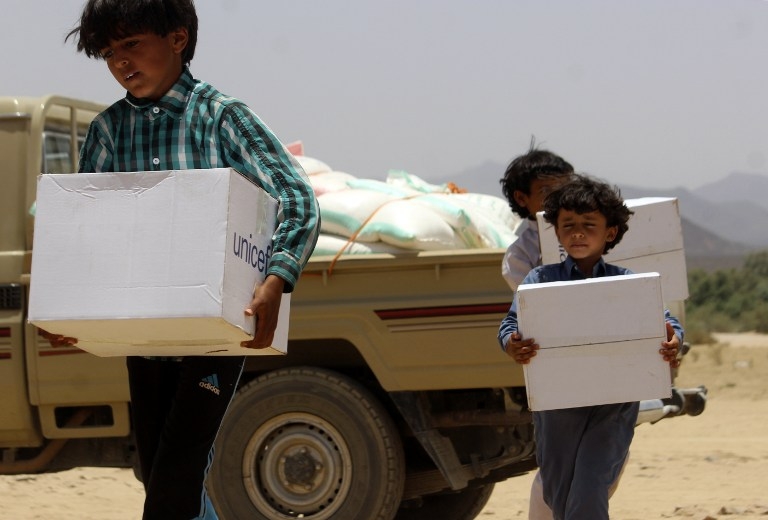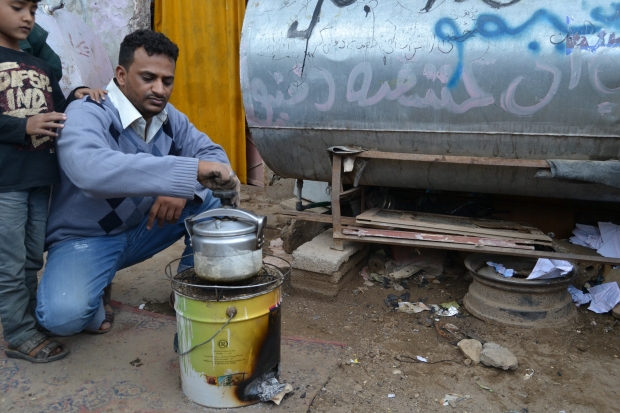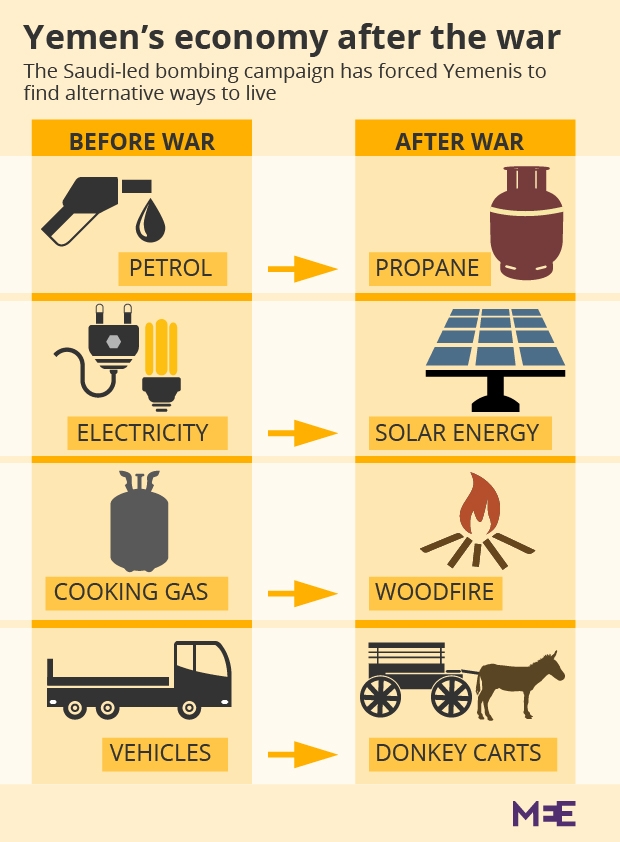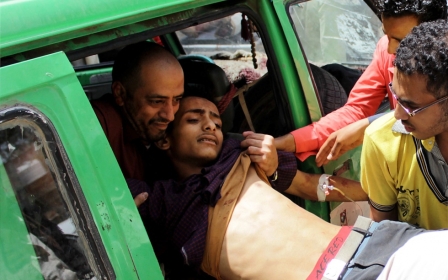Paint thinner and donkey carts: Resource scarcity in war-torn Yemen

SANAA - Using phone lines to power lamps, paint-thinner to run motorbikes and donkey carts to transport medical supplies to remote villages, Yemenis, trapped in an escalating conflict, are seeking out alternative ways to survive.
Power cuts and water shortages have been common in Yemen since a mass uprising overthrew President Ali Abdullah Saleh in 2011, but in recent weeks conditions have deteriorated.
A Saudi-led bombing campaign against Houthi militants, accompanied by an air and naval blockade, has cut off vital supplies of food and fuel.
Petrol stations have been hit by airstrikes and electricity cables damaged in fighting between tribesmen and the Houthis.
But with shelves lying empty, a new war-driven entrepreneurship has proliferated.
New MEE newsletter: Jerusalem Dispatch
Sign up to get the latest insights and analysis on Israel-Palestine, alongside Turkey Unpacked and other MEE newsletters
Majed al-Sharjabi, a 42-year-old doctor, had been using petrol to run a generator in his home until the coalition’s naval blockade, which prevents fuel ships from docking, sent petrol prices soaring.
Sharjabi switched to propane. But within a week the price of propane tripled, forcing Sharjabi to give up on his generator and buy a Chinese-manufactured solar panel.
“Solar is not the best but it works for me. I can charge my computer and the cell phones of my neighbours,” Sharjabi said.
“If it's a bright day I can power the television for an hour and find about how much more my country has been destroyed.”
After the airstrikes started in late March, 23-year-old Nasri Abobaker bought a 1.5 volt battery which he used to charge his own phone. It cost him around 200 Yemeni rials ($1).
When the battery ran flat he discovered he could salvage some electricity from the cable connecting his landline phone.
“I built an adapter. Now I can power one lamp from it, and it’s free,” said Abobaker.
Ferrying people around Sanaa on the back of his motorbike used to earn 23-year-old Ayman al-Dhobhani 2,000 rials ($9) a day, enough to feed his family and pay rent for a small apartment on the outskirts of Sanaa.
Nowadays, unable to afford fuel, he uses paint-thinner.
“In 2011, there was a similar fuel crisis. We used paint-thinner to operate our motorbikes. It worked out," said al-Dhobhani.
In the last week, the cost of 1.5 litres of paint-thinner has risen from 500 rials ($2), to 1,800 ($8).
“My last solution would be to operate my motorcycle with a kind of antiseptic called 'Spirit'. The bike runs but it damages it,” Al-Dhobhani said.
Sawdust stoves
Meanwhile, cooking gas has also vanished from the shelves.
Um Naif, a mother of three in her 50s who lives in a village north of Sanaa, cooks by burning cardboard and firewood foraged from the trees and garbage around her house. “Time has toughened us,” she said with a faint smile.
Unable to afford propane, Hani Bakhtan, a resident in the al-Sawad neighborhood, designed a cooking stove - a metal bucket crammed with sawdust and overlaid with clay - that he had seen being used by Syrian refugees.
“One bottle of sawdust costs $5 and will last a family a week,” said Bakhtan. “I have made more than 50 stoves for neighbours in al-Sawad.”
Additionally, in the Western province of Hodeidah, aid organisations have begun using donkey carts as an alternative way to distribute water to people in need.
Last week the World Health Organisation confirmed via Twitter that donkey carts were replacing vehicles as a means to get vital supplies out.
"It is a flat and rural governorate so it makes sense to use donkeys," said Salah al-Homaidi, the executive manager of the national center for freedoms and development.
"It is sad though - seeing people use donkeys to transport wheat, rice and sugar from the market to their houses. We've gone back a century."
Middle East Eye delivers independent and unrivalled coverage and analysis of the Middle East, North Africa and beyond. To learn more about republishing this content and the associated fees, please fill out this form. More about MEE can be found here.






